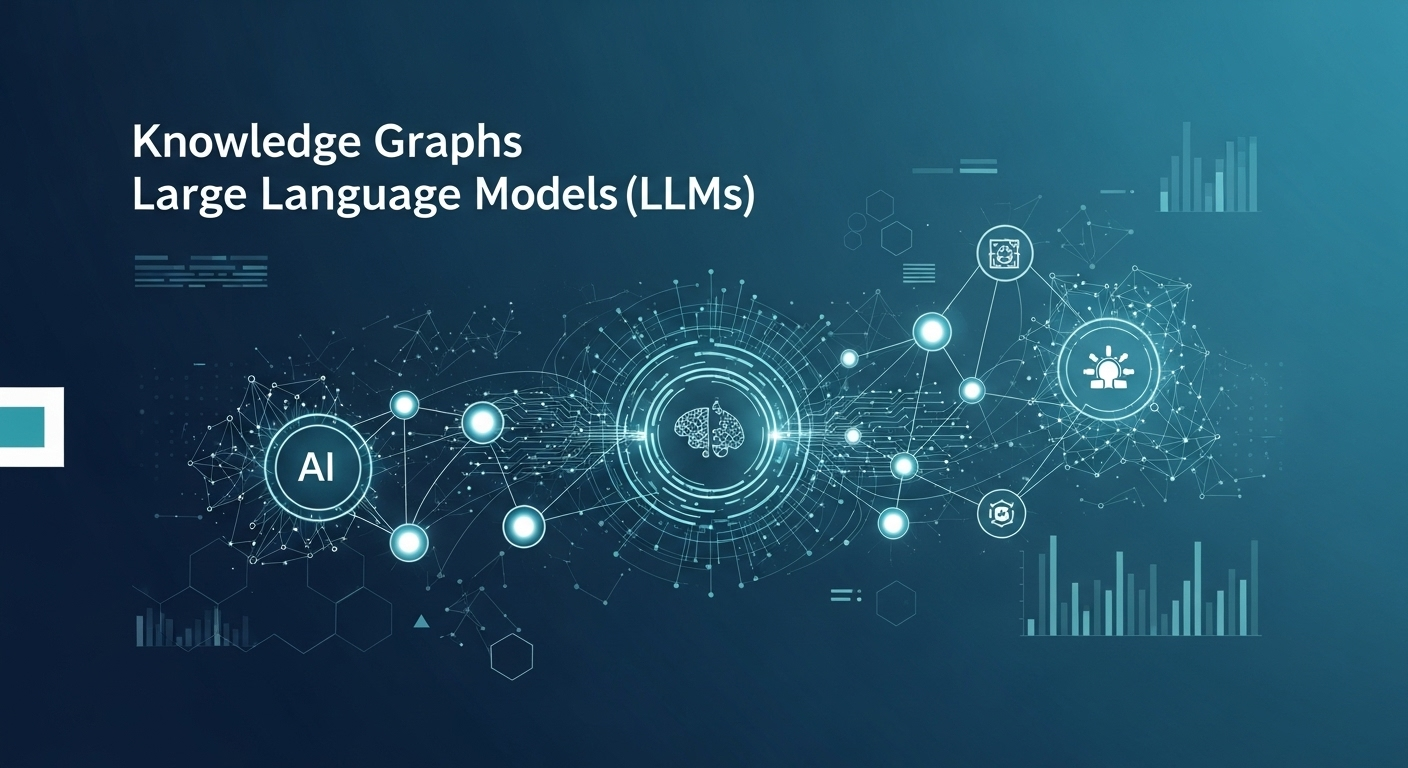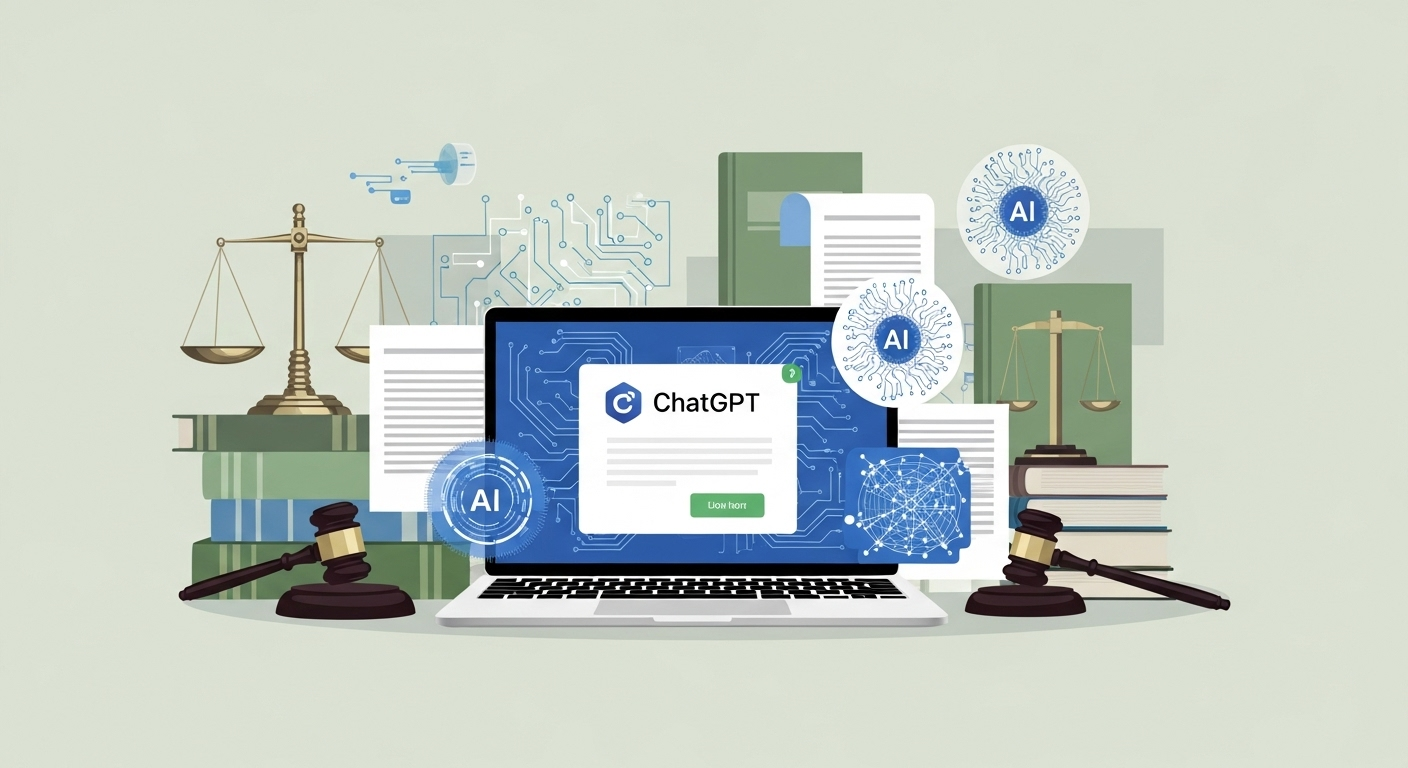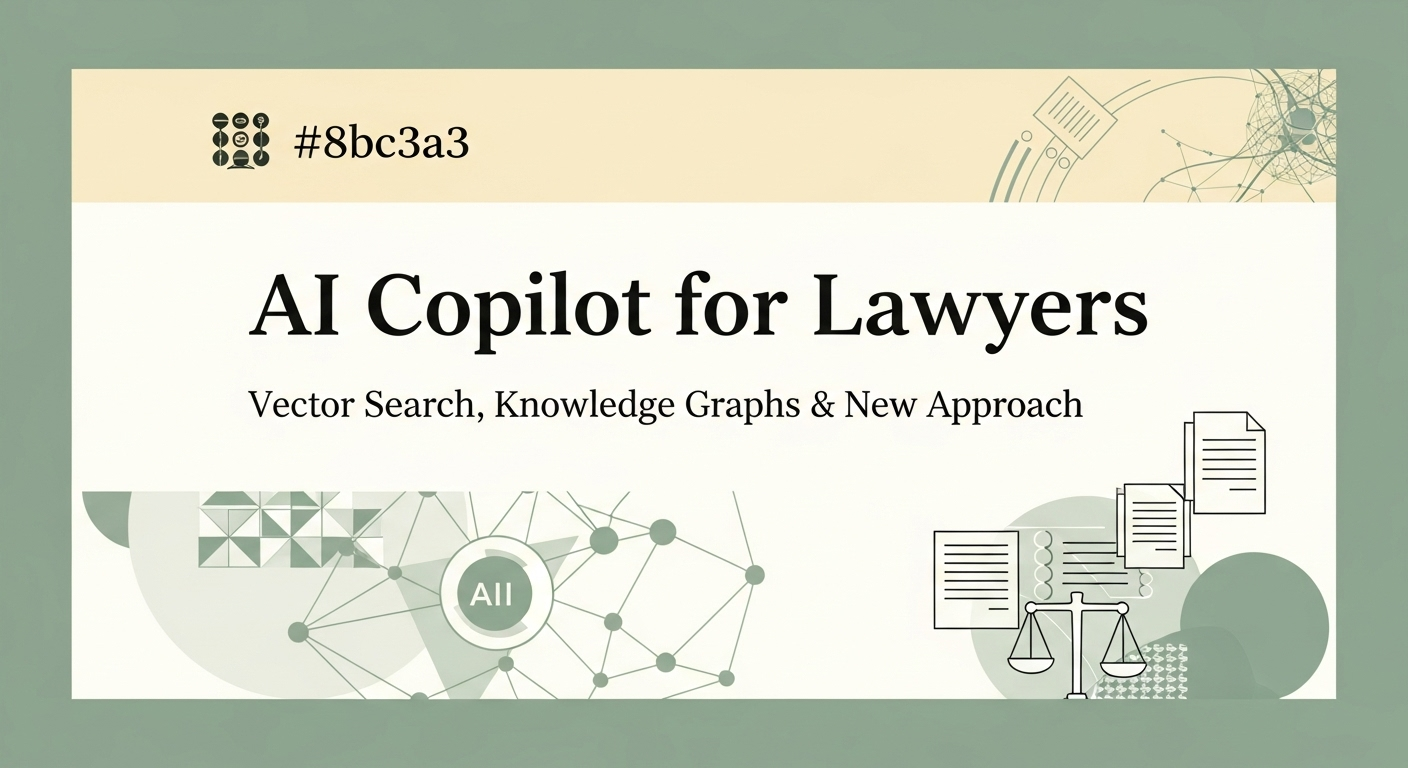
Welcome to the AdmissusCase Podcast. Today we're diving deep into a topic that's been creating a lot of buzz in the AI and legal tech communities: the combination of knowledge graphs and large language models. You've probably heard the hype about how these two technologies were supposed to revolutionize question-answering systems and search capabilities. But here's the thing – as of 2025, this pairing hasn't quite lived up to the expectations. Let's explore why.
First, let's set the stage. Knowledge graphs store information in a structured way – think of them as networks of facts where each node represents an entity and edges show relationships between them. They're great at answering simple factual queries with high accuracy and traceability. On the other hand, large language models like GPT are incredibly flexible with natural language but can hallucinate facts and lack real-time data.
The promise seemed perfect: use knowledge graphs as the reliable source of facts, and let LLMs handle the natural language interface to generate human-readable answers. This hybrid approach was called Graph-enhanced RAG or GraphRAG. In theory, it would combine the reliability of structured data with the conversational abilities of LLMs. Sounds amazing, right?
But here's where reality kicks in. As of September 2025, most of these systems remain laboratory experiments. They're not scaling to production environments, and there are solid reasons why. Let's break down the key challenges.
First challenge: knowledge graphs are expensive to build and maintain. Unlike simple text databases, creating a comprehensive knowledge graph requires extensive manual work. You need subject matter experts to define entities, relationships, and ensure data quality. For legal documents or technical literature, this becomes even more complex. Legal texts have intricate cross-references, amendments, and interpretative nuances that don't map easily to simple graph structures.
Second issue: the retrieval pipeline is brittle. In GraphRAG systems, you typically start with a user question, convert it to a graph query, retrieve relevant subgraphs, and then feed that to the LLM. Each step can fail. The query generation might miss key concepts, the graph traversal might return irrelevant connections, and the context assembly might overwhelm the LLM with too much structured data. Research shows that these systems often perform worse than simpler vector-search RAG approaches.
Third problem: LLMs struggle with graph-structured input. While they excel at processing natural text, feeding them graph data in formats like JSON or triplets often confuses them. The models were trained on flowing text, not structured data formats. When you give an LLM a complex graph representation, it often loses the narrative thread and generates inferior answers compared to processing plain text chunks.
Fourth challenge: scalability and latency. Real-time graph queries on large knowledge bases are computationally expensive. For production legal AI systems that need to respond quickly to lawyer queries, adding graph database operations creates unacceptable delays. Vector search, in contrast, is highly optimized and much faster.
Now, let's talk about legal applications specifically. Legal texts present unique challenges for knowledge graphs. Consider trying to model international human rights law – you'd need to capture relationships between treaties, court decisions, country-specific implementations, amendments over time, and interpretative guidance. The graph would be enormous and require constant expert maintenance. Moreover, legal reasoning often requires understanding context and nuance that's better preserved in full-text documents than abstracted into graph nodes.
Research papers from 2024 and 2025 have shown disappointing results. Studies comparing GraphRAG to standard vector RAG found that the added complexity of knowledge graphs rarely improved answer quality, while significantly increasing system complexity and cost. In many cases, simpler approaches performed better.
The investment question is crucial here. Tech giants like Google and Microsoft have invested heavily in knowledge graph research, but even they've pulled back from aggressive production deployments. The cost-benefit analysis doesn't favor GraphRAG for most use cases. Companies are finding that investing in better document preprocessing, smarter chunking strategies, and fine-tuned embedding models delivers better ROI than building elaborate knowledge graphs.
So what's the takeaway for legal tech practitioners? Don't let the hype distract you from proven solutions. For most legal AI applications, a well-designed vector search RAG system will outperform complex GraphRAG setups. Focus on high-quality document ingestion, effective chunking that preserves legal context, and robust retrieval mechanisms. Save knowledge graphs for specific scenarios where structured relationships truly matter – like conflict checking or case law citation networks.
The bottom line: knowledge graphs aren't bad technology, but combining them with LLMs hasn't delivered the promised revolution. Simpler approaches often work better, cost less, and scale more reliably. That's the reality check we needed in 2025.
Thanks for listening to the AdmissusCase Podcast. For more insights on legal technology and AI innovations for human rights lawyers, visit our website. Until next time, keep innovating responsibly.
September 7, 202513:33

Welcome to the AdmissusCase Podcast. I'm here today to talk about something that's generating both excitement and anxiety in law firms around the world: ChatGPT and AI tools in legal practice. Whether you're a solo practitioner or part of a large firm, you've probably wondered – should I be using these tools? How can they help? What are the risks? Let's dive in.
First, let's talk about what ChatGPT and similar large language models can actually do for lawyers. These aren't just fancy autocomplete tools – they're powerful assistants that can genuinely boost your productivity when used correctly.
The most obvious application is document drafting. You can ask ChatGPT to create an initial draft of a legal letter, a memorandum, or even a simple contract based on your specifications. For example, you could say "Draft a cease and desist letter for trademark infringement" and provide the key facts. The AI will generate a working draft that gives you a solid starting point. Now, is this draft ready to send to a client? Absolutely not. But it eliminates the blank page problem and can save hours of initial drafting time.
Editing and proofreading are another strong suit. You can paste a document you've written and ask ChatGPT to improve clarity, fix grammar, or make the language more persuasive. It's particularly good at identifying overly complex sentences and suggesting simpler alternatives. For lawyers who struggle with plain language requirements – which is increasingly important in consumer-facing legal documents – this can be incredibly valuable.
Research assistance is where things get interesting, but also where we need to be very careful. ChatGPT can help you brainstorm legal arguments, explain unfamiliar concepts, or outline the structure of a complex legal issue. If you're working in an area outside your usual practice, it can provide a quick overview to get you oriented. However – and this is crucial – you cannot rely on ChatGPT for accurate legal citations or case law. The model will confidently cite cases that don't exist, a phenomenon lawyers call "hallucination." Always verify every legal reference independently.
Client communication is another area where AI shines. You can use it to draft client-friendly explanations of complex legal concepts, write FAQ documents, or create templates for common client questions. The AI is excellent at taking technical legal language and translating it into plain English that clients can understand.
Now let's talk about the serious limitations and risks, because there are many.
The hallucination problem is not a minor glitch – it's a fundamental limitation of how these models work. Large language models don't "know" facts in the way humans do. They predict what words should come next based on patterns in their training data. Sometimes those predictions produce convincing-sounding but completely fabricated information. There have been actual cases where lawyers submitted court filings with fake case citations generated by ChatGPT, resulting in sanctions and professional embarrassment.
Confidentiality is another major concern. When you type information into ChatGPT, you're sending client data to a third-party server. This can violate attorney-client privilege and professional ethics rules. Some jurisdictions have already issued guidance that using public AI tools with client information may constitute an ethical violation. If you're going to use these tools, you need enterprise versions with proper data protection guarantees, or you need to carefully anonymize any information before inputting it.
The knowledge cutoff issue is significant. ChatGPT's training data has a cutoff date, meaning it knows nothing about legal developments after that date. For lawyers, who need to stay current with the latest cases, statutes, and regulations, this is a serious limitation. You cannot rely on ChatGPT for up-to-date legal information.
Here are the best practices for lawyers who want to use these tools safely: First, never input confidential client information into public AI tools. Either use enterprise versions with proper safeguards or anonymize thoroughly. Second, verify everything. Every legal citation, every factual claim, every piece of legal analysis – check it independently. Third, use AI as a starting point, not a finish line. Let it help with drafts and brainstorming, but apply your professional judgment to everything it produces. Fourth, stay informed about ethics guidance in your jurisdiction. Rules around AI use are evolving rapidly.
Now, an important question: will ChatGPT replace human lawyers? The answer is definitively no, and here's why. Legal practice requires judgment, strategy, client relationships, ethical decision-making, and contextual understanding that AI simply doesn't have. ChatGPT can't understand your client's business goals, assess the political dynamics of a negotiation, or make ethical judgments about how to proceed in a gray area. It can't appear in court, negotiate on behalf of clients, or provide the empathy and human connection that clients need during difficult legal situations.
What about specialized legal AI versus general ChatGPT? This is an important distinction. General-purpose tools like ChatGPT are trained on everything – books, websites, random internet content. Specialized legal AI tools are trained specifically on legal materials and often include verified case law databases, jurisdiction-specific knowledge, and integration with legal research platforms. For serious legal work, specialized tools are almost always better. They're designed with legal workflows in mind and include safeguards against the hallucination problem.
The bottom line is this: AI tools like ChatGPT are powerful productivity enhancers when used correctly. They can save time on routine tasks, help with drafting, and assist with research. But they require careful, informed use. They're tools to augment human lawyers, not replace them. Treat them like a very knowledgeable but unreliable intern – helpful for certain tasks, but everything needs verification.
Thanks for listening to the AdmissusCase Podcast. For more guidance on using AI responsibly in legal practice, visit our website. Until next time, practice smart and stay ethical.
September 6, 202525:30

Welcome to the AdmissusCase Podcast. Today we're tackling a technical topic that's crucial for anyone building or evaluating AI tools for legal practice: AI copilots for lawyers. Specifically, we're going to review the current state of vector search, examine knowledge graph applications, and introduce a new dynamic approach that's showing real promise for legal reasoning. Let's get into it.
First, let's talk about what we mean by "AI copilot for lawyers." These are systems that assist lawyers by retrieving relevant legal information and generating answers to legal questions. Most modern legal AI copilots use something called Retrieval-Augmented Generation, or RAG for short. The basic idea is simple: when you ask a question, the system first searches through a database of legal documents to find relevant passages, then feeds those passages to a large language model like GPT-4, which generates a natural language answer based on that context.
Now, the question is: how do we search through legal documents effectively? The dominant approach right now is vector search. Let me explain how this works. Each document or passage is converted into a mathematical representation called a vector – essentially a list of numbers that captures the semantic meaning of the text. When you ask a question, that question is also converted into a vector. The system then finds documents whose vectors are mathematically similar to your question vector. This semantic similarity search is powerful because it can find relevant documents even when they use different words than your query.
Sounds great, right? But vector search has significant limitations, especially for legal applications. The biggest problem is that semantic similarity doesn't always correlate with legal relevance. A document might be semantically similar to your query but legally irrelevant, or vice versa. For example, if you're researching admissibility standards for evidence in criminal cases, vector search might return documents about civil procedure that happen to use similar language but operate under completely different legal standards.
Another issue with vector search is context collapse. Legal reasoning often depends on understanding the relationship between multiple legal concepts, the hierarchy of legal authorities, and the progression of legal arguments. But vector search treats each chunk of text independently. It doesn't understand that a Supreme Court decision overrules a lower court case, or that a statute has been amended, or that a particular legal doctrine requires analyzing multiple factors in a specific sequence.
This brings us to knowledge graphs. Some researchers have tried to address vector search limitations by building knowledge graphs of legal information – structured databases that explicitly represent relationships between legal entities. For example, a knowledge graph might show that Case A cites Case B, that Statute X was amended by Statute Y, or that Doctrine Z consists of five required elements.
In theory, combining knowledge graphs with large language models should solve the problems of vector search. The knowledge graph provides structured, reliable relationships, while the LLM handles natural language interaction. But as we discussed in our previous episode on this topic, knowledge graph plus LLM systems have largely failed to deliver in practice. They're expensive to build, hard to maintain, and often perform worse than simpler approaches.
So where does that leave us? Is there a better approach for legal AI copilots?
This is where the new dynamic approach comes in. Instead of trying to build one perfect retrieval system, this approach recognizes that different legal questions require different retrieval strategies. Sometimes you need broad semantic search, sometimes you need precise keyword matching, sometimes you need to follow citation chains, and sometimes you need to consult hierarchical legal sources in a specific order.
The dynamic approach works like this: When a lawyer asks a question, an orchestration layer first analyzes what type of legal question it is. Is it a straightforward factual query about what a statute says? Is it a complex multi-factor analysis? Is it a question about how courts have interpreted a particular provision over time? Based on this analysis, the system dynamically selects and combines different retrieval strategies.
For a simple statutory interpretation question, it might use exact text search to find the relevant statute. For a question about how courts apply a legal test, it might use citation network analysis to find the leading cases and their progeny. For a complex issue requiring synthesis across multiple areas of law, it might use a combination of semantic search, temporal filtering, and authority ranking.
The key innovation is that the system doesn't commit to a single retrieval approach. It adapts based on the query. This flexibility allows it to handle the full diversity of legal questions that lawyers actually ask.
Let me give you a concrete example from human rights law. Suppose a lawyer asks: "What are the admissibility requirements for communications to the UN Human Rights Committee?" This is actually several questions wrapped into one. You need to find the relevant provisions of the Optional Protocol, understand how the Committee has interpreted these requirements in its jurisprudence, and know about any procedural reforms that might have changed the standards.
A simple vector search might return random Committee decisions that mention admissibility but miss key procedural documents. A knowledge graph alone can't capture the nuanced evolution of the Committee's interpretation over time. But a dynamic approach can: start with precise retrieval of the Optional Protocol text, then use citation analysis to find leading jurisprudence on each admissibility criterion, then use temporal analysis to identify recent decisions that might reflect updated standards. The LLM then synthesizes all this information into a coherent answer.
Now, implementing this dynamic approach is technically more complex than simple vector search RAG. You need query classification capabilities, multiple retrieval backends, and sophisticated orchestration logic. But for legal applications where accuracy and completeness are paramount, the additional complexity is worth it. Early implementations are showing significantly better performance on complex legal questions compared to single-strategy systems.
What does this mean for lawyers evaluating AI tools? First, be skeptical of vendors who tout vector search as a silver bullet. It's a useful technique but has real limitations. Second, ask about how the system handles different types of legal queries. Does it use a one-size-fits-all approach, or does it adapt its strategy? Third, test the system with complex, multi-faceted legal questions – not just simple factual lookups. That's where you'll see the differences in quality.
The future of legal AI copilots lies in sophisticated, adaptive systems that can handle the full complexity of legal reasoning. We're moving beyond simple semantic search toward systems that understand the structure and dynamics of law itself.
Thanks for listening to the AdmissusCase Podcast. For more deep dives into legal technology, visit our website. Until next time, keep pushing the boundaries of what's possible in legal tech.
January 10, 202524:12